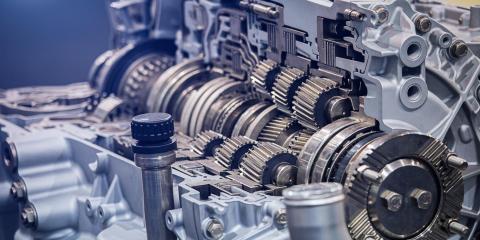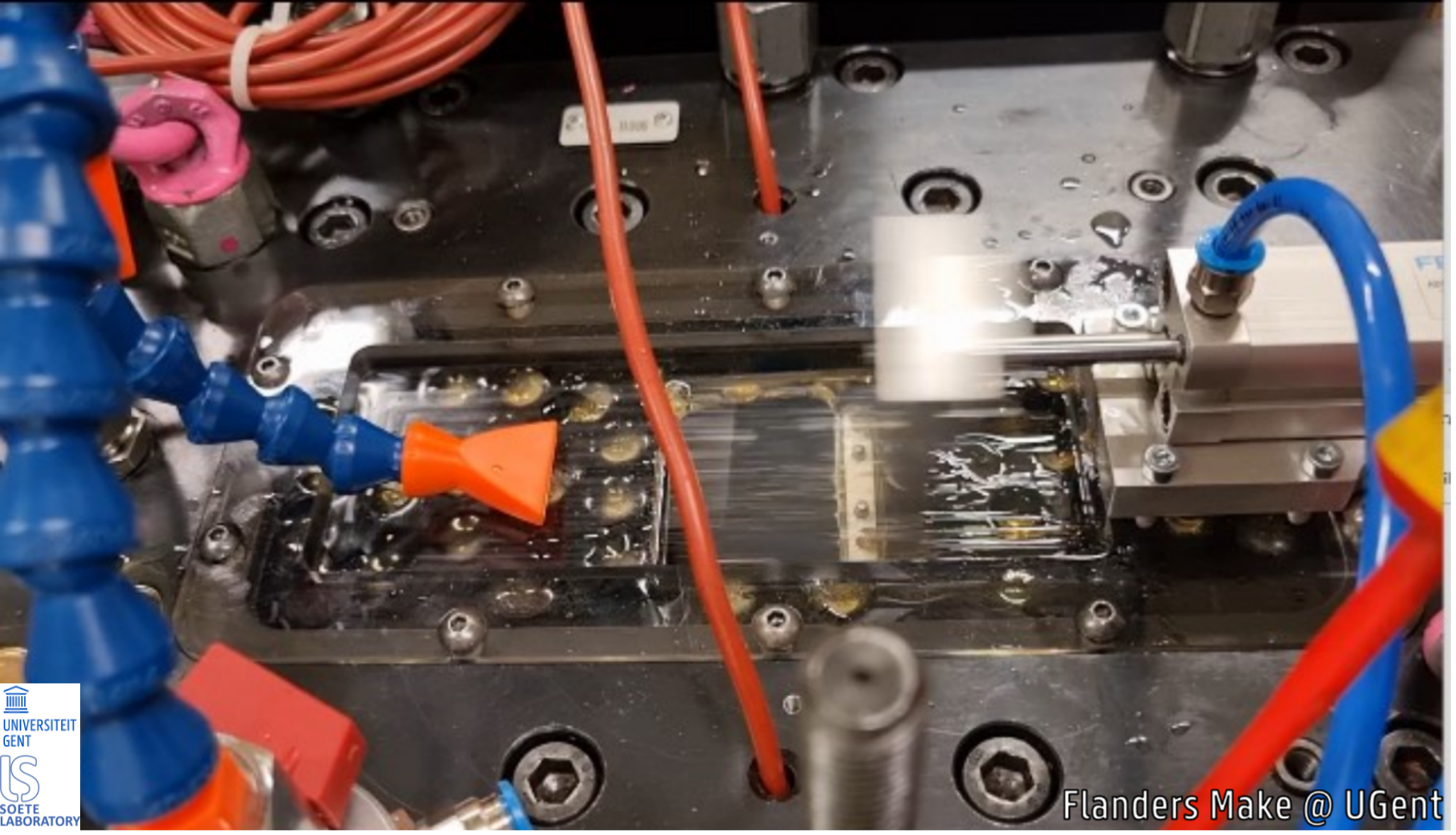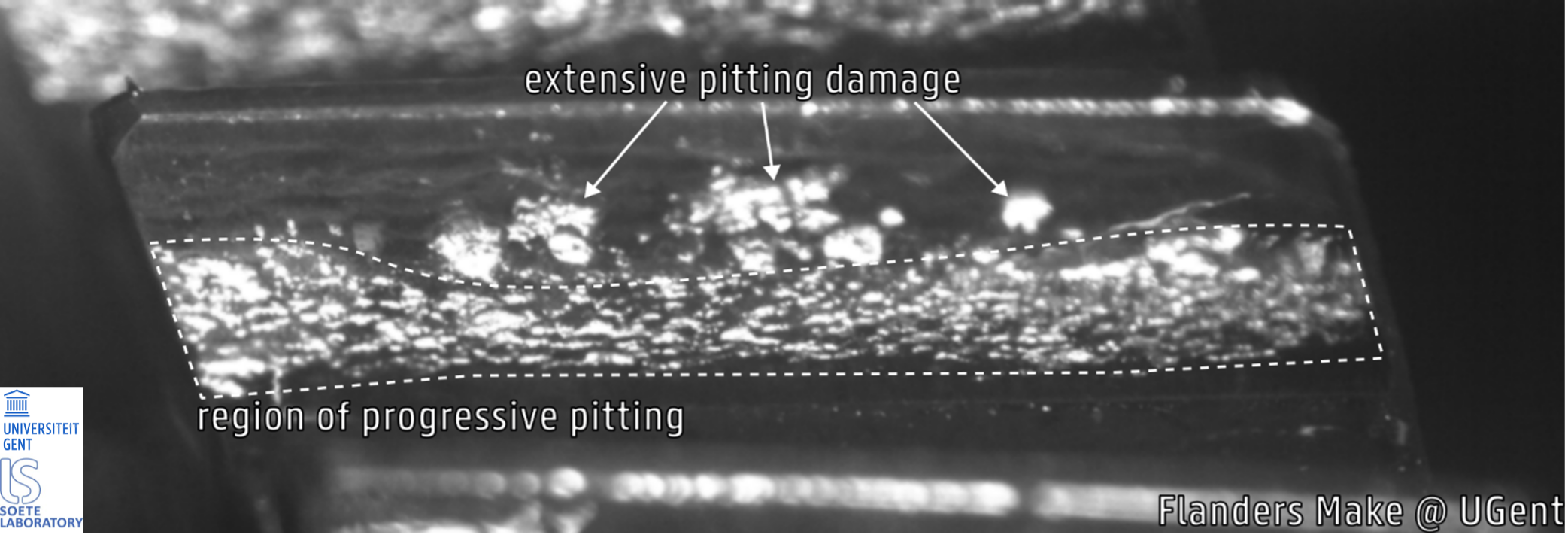Advancing Gearbox Reliability: Vision-Assisted Condition Monitoring

In the demanding world of manufacturing, unexpected equipment failures can cause costly downtime and disrupt production schedules. Gearboxes, as essential components in industrial machinery, require continuous monitoring to maintain efficiency and prevent failures. Traditional condition monitoring methods rely heavily on vibration analysis. These traditional methods, however, often lack to provide detail and in-depth understanding of gearbox degradation (i.e. pitting, spalling and scuffing). We developed diagnostic indicators that can outperform the current state-of-the-art in terms of earlier and more robust detection as well as defect size estimation. Read more about how our innovative research is pushing the boundaries of gearbox maintenance by using vision-assisted monitoring combined with artificial intelligence (AI).
Accelerating Condition Monitoring with Vision and AI
In our set-up, we implemented both direct (camera) and indirect (vibration) gear monitoring systems to establish a reliable gear degradation data. By developing oil splash mitigation strategies, the camera system can monitor the gearbox while it is running, without the need for manual intervention. The data of the quantified damage evolution based on the direct monitoring system are synchronized with the signals captured by the indirect monitoring systems.

A single image per gear tooth is automatically extracted using advanced image filtering methods. This still results in a large volume of images that require defect segmentation, which poses a significant challenge. To address this, AI is used to segment and quantify damage on gear surfaces, reducing the need for extensive manual annotation by experts. By prioritizing the most informative images, through active learning, a dramatically decreased segmentation time is achieved, allowing for faster and more scalable monitoring solutions.
Understanding Damage Development in Gearboxes
The first important result of this proces is the estimation of gear health degradation curves. These curves provide valuable insights into the physical process occurring within a gearbox, allowing for a deeper understanding of how wear and damage evolve over time. We revealed how gearbox pitting degradation follows distinct phases, each presenting unique monitoring challenges. In the initial stage, small pitting begins to form but is often too subtle for cameras to detect. As damage progresses, wear becomes apparent and sufficiently large to be segmented, followed by more extensive damage that may spread to other components. By analyzing images over time, AI enables us to track these changes with higher accuracy, providing a comprehensive view of gearbox health.

More Reliable Vibrational Condition Indicators
From the start, one of our major goals was to improve the state-of-the-art indirect (vibration) indicators currently used in industrial monitoring. Evaluating indicators involves several key criteria: how early they detect faults, their accuracy in assessing fault location and severity, and their computational efficiency. By synchronizing the data from the camera system with vibration-based monitoring, we were able to enhance the performance of indirect monitoring methods, narrowing the detection gap between these two approaches. Our new indicators show promising results, outperforming some of the best existing methods in early fault detection and robust assessment of gearbox degradation.
From Lab to Industry
We are ready to transfer our promising results to real-world industrial use, to improve gearbox reliability and fault detection. Several key industry use cases are ready for application:
- Use the vision system to obtain a better understanding in gear degradation or as a ground truth reference for your R&D and gearbox testing.
- Replace conventional vibration-based indicators with our improved AI-enhanced models.
- Access our test infrastructure and datasets for your R&D.
- Implement our vision system as a solution for long-term gearbox monitoring in the field.